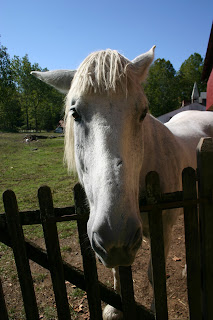The bottom of the furnace where the iron was accessed.
The "big house".
The barn
The "big house"The blacksmith shop
The casting house which surrounds the furnace and contains the molding and casting equipement.Sand molding equipement.
More sand molding stuff.
Charcol wagon. The bottom boards slide out to dump loads of charcol that caught fire, before the fire burned up the wagons.
Passage way between the charcol storage room and the top of the furnace where the
charcol and iron were loaded into the furnace.
Park chickens.
Friendly park horse.
Conestoga wagon. The first ones were produced near here and named after the Conestoga River.
Bottom of the furnace where the smelted iron was accessed.
Tenant's garden.
Clouseau, a percheron horse.
Grain storage in the village store
Clouseau again.
Laundry room in the spring house
No nails in the old construction!
Tuyere pipe blowing air in the furnace.
Cast iron stove plates.
Park ram.
Park ewe - isn't she fat?
Schuyhkill River
Water wheel.
More water wheel pics.
The park also has an apple orchard that we have been able to pick apples from. It has 200 trees of 30 varieties that were available in the 1700s and 1800s. Johnnie Appleseed would be proud.
Back of the barn and store.
Entrance of the casting house, built around the furnace.
One of the tenant houses.
Village store.
View from the big house yard.
Horse team in Pottstown street fair.
Inside the spring house. The spring runs through the house. Food was stored inside crocks sitting in the water.
The woods in the park are a combination of mostly oak and some sycamore. Occassionally a black walnut tree appears. The acorns are falling now so that when you walk through the woods you hear a crunch that sounds something like popcorn popping. One acorn fell on the top of Mike's head, and we hear many others falling on the roof of the house.
There is an apple orchard in the park with 200 trees and 30 varieties that were available in the 19th century. People come to pick them for a dollar a pound in the fall. It is a popular family annual event. We picked 20 pounds and made wonderful applesauce. (Amie, I could have used your peeler!)
I often feel like the park is in a maize. There are so many towns nearby and so many narrow curvy roads with highway numbers that it is difficult to learn them all. When people give me directions, they go in one ear and out the other because the names are all so unfamilliar. I know the way to the grocery store and can find my way back if it isn't dark. When I was taking a walk, one man stopped to ask me where the state game lands were. I told him, I am here and I know how to get back to the park. That is all I know!
During the weekends, people dress in period costumes work in the village and answer questions. On my first day working, a Menonite couple came in and I at first assumed that they were volunteers in period costumes. I am so glad that I didn't say anything to them! Many Menonite people and a few Amish people do come and visit the park. I recommend everyone come to visit. It is an amazing piece of history!






































We just watched cider being pressed today - I was wishing for an orchard and cider press of my own!
ReplyDelete